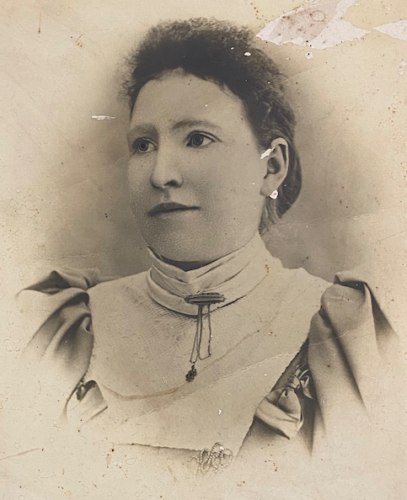Kate Donnelly, a 21-year-old maid, disappeared one night near the Queanbeyan railway station on April 15. “Yesterdays” columnist NICHOLE OVERALL traces the weird stuff that happens next.
THE schoolgirls step between the darkened voids of the rocky outcrops rising from the desolate landscape. The ethereal trio continue to gracefully ascend before each is swallowed by the deepening shadows.

It’s Valentine’s Day, 1900. One will later be found, near-death, remembering nothing. Two are never seen again.
That, of course, is a wrap-up of Joan Lindsay’s iconic “Picnic at Hanging Rock”, the haunting events unfolding in the remote surrounds of Mt Macedon, Victoria.
In the Canberra region, there was a mystifyingly similar scenario four years earlier than the setting of Lindsay’s beguiling tale. And rather than the tantalising nature of the dream-inspired work she feverishly produced over two short weeks 54 years ago – fact or fiction, you must decide – the tragic case of Kate Donnelly is indeed true.
It’s a frosty though dry mid-autumn day, 1896, in the wake of a particularly gruelling Australian summer that killed 435; the beginning of the destructive seven-year blight of the Federation Drought.
Along a depleted river running at the outskirts of Queanbeyan, a set of footprints are revealed. Ending near a “large, deep hole” in the riverbed, none are to be found coming out again. The discovery of a “lady’s veil” above a steep approach down to the watercourse, believed a vital clue.
Five days earlier, 21-year-old Kate had vanished without either rhyme or reason.
Wednesday, April 15 is the last day of the first modern Olympic Games, held in Greece. Locals are soon distracted from their excitement that the only Aussie competitor, Edwin Flack, is bringing home two gold medals for track events and a tennis-doubles bronze.
Early that evening, Kate had made her way to Queanbeyan’s impressive, decade-old railway station, perched south of the streets marking the almost 60-year-old township’s centre. She’s off to Sydney for a throat operation and the next morning fails to appear at Redfern for a predetermined meeting with her employer, Miss Cunningham, of Lanyon.
Abandoned on the platform at Queanbeyan is a box and two parcels belonging to the young maid.
The perplexing disappearance is reported to police, but it would be Monday before an official search commences.

The 5ft 6in Kate was fashionably attired in “a dark navy blue dress, with full sleeves, and a feather boa round her neck, a sailor hat with black band”; a handbag to match her reddish hair. She’d apparently been seen “getting through a wire fence… and making straight for the river” – the willow-infested Molonglo on the Canberra side of the train tracks.
Some 50 of 1500-odd residents hunt in vain. The local waterways are combed; scrubby bushland for miles around, scoured.
Not a further trace, “alive or dead”.
“Drowned” is the obvious whisper. Also making the rounds, theories to blemish a reputation: afraid of the procedure she was to endure, she’s in hiding; she’s “cleared out”, or, “committed the sin of self-harm”. The next was seemingly a heartless hoax, the motive equally unanswered. A letter from a “fellow servant” informing her Scottish-born mother, Mary, that Kate “intended to marry a gentleman, Mr T—, residing between Murrumbateman and Ginninderra, and that she was going to the house of his sister at Harden”.
No so-named sister lived in that small town; the man referenced was in Sydney at the time.
Weeks crept by. At the end of April, the unexplained saga was pushed aside with news such as the death of former NSW premier and ardent supporter of the country combining as a commonwealth, Sir Henry Parkes, at 81.
Then on Friday, May 8 – 23 days after Kate was last seen and 10 miles south – a cry goes up from John McIntosh, of Majura Valley.
Some distance from his house, he’d come upon a trail of feathers he didn’t recognise, leading off into thick scrub.
“Lying under a log exhausted, starved almost to death, helpless and unable to speak” – still wearing her gloves and clutching the handle of her otherwise absent handbag – is Kate Donnelly.
In a “demented” state, she’s unable to articulate what had befallen her, or explain the miracle of how she was alive. The greater concern is that she won’t survive her ordeal and the mystery will never be solved.
Come Monday, on the mend, Kate’s able to offer some details – as puzzling as they are. She’d been “knocked on the head by a man who robbed her”. For days “insensible”, unable to walk, managing only to crawl about, sustained with water and “what she could pick up in the bush”.
Kate’s story later alters somewhat. The trip to Sydney was debt-related – she needed additional work to pay for a frock she could ill-afford. However, she’d had a change of heart. Her memory ended at the decision to make her way back to her parents’ Canberra home.
As with the conundrum of what befell Lindsay’s three protagonists, 124 years on, questions around Kate’s situation linger. Had the thieving cad simply chanced upon her walking along the river? Why would she leave her belongings behind?
It seems there was never a charge laid, nor even a suspect.
While described as “a girl of good conduct”, was there an intended assignation after all?
And what of the potentially adventurous young Kate? Sadly, an end grim enough to rival that to befall those classmates in the mists shrouding that ominous Rock.
Four months after Kate’s disappearance, while warming herself by the fire on the morning of another Wednesday, August 12, her nightdress caught alight*. So badly burned was she, once again there “were grave doubts as to whether she would live through”.
This time, she didn’t.
Less a dream within a dream than a living nightmare.
*A similar fate befell Flora Blundell, the young woman said to haunt the historic cottage on the edge of Canberra’s lake, and you can find out more about both of these sad tales at anoverallview.wixsite.com/blog
Who can be trusted?
In a world of spin and confusion, there’s never been a more important time to support independent journalism in Canberra.
If you trust our work online and want to enforce the power of independent voices, I invite you to make a small contribution.
Every dollar of support is invested back into our journalism to help keep citynews.com.au strong and free.
Thank you,
Ian Meikle, editor




Leave a Reply